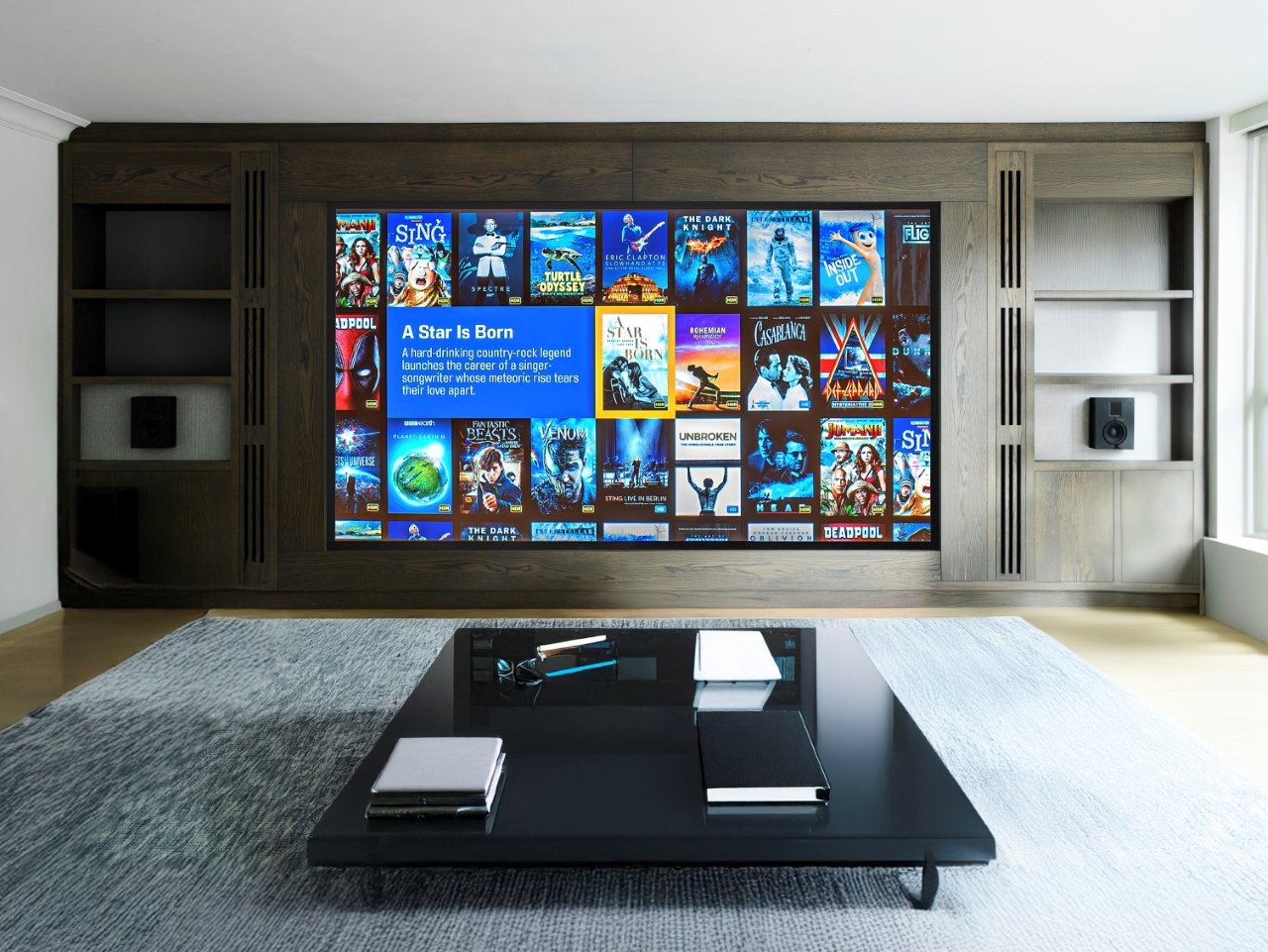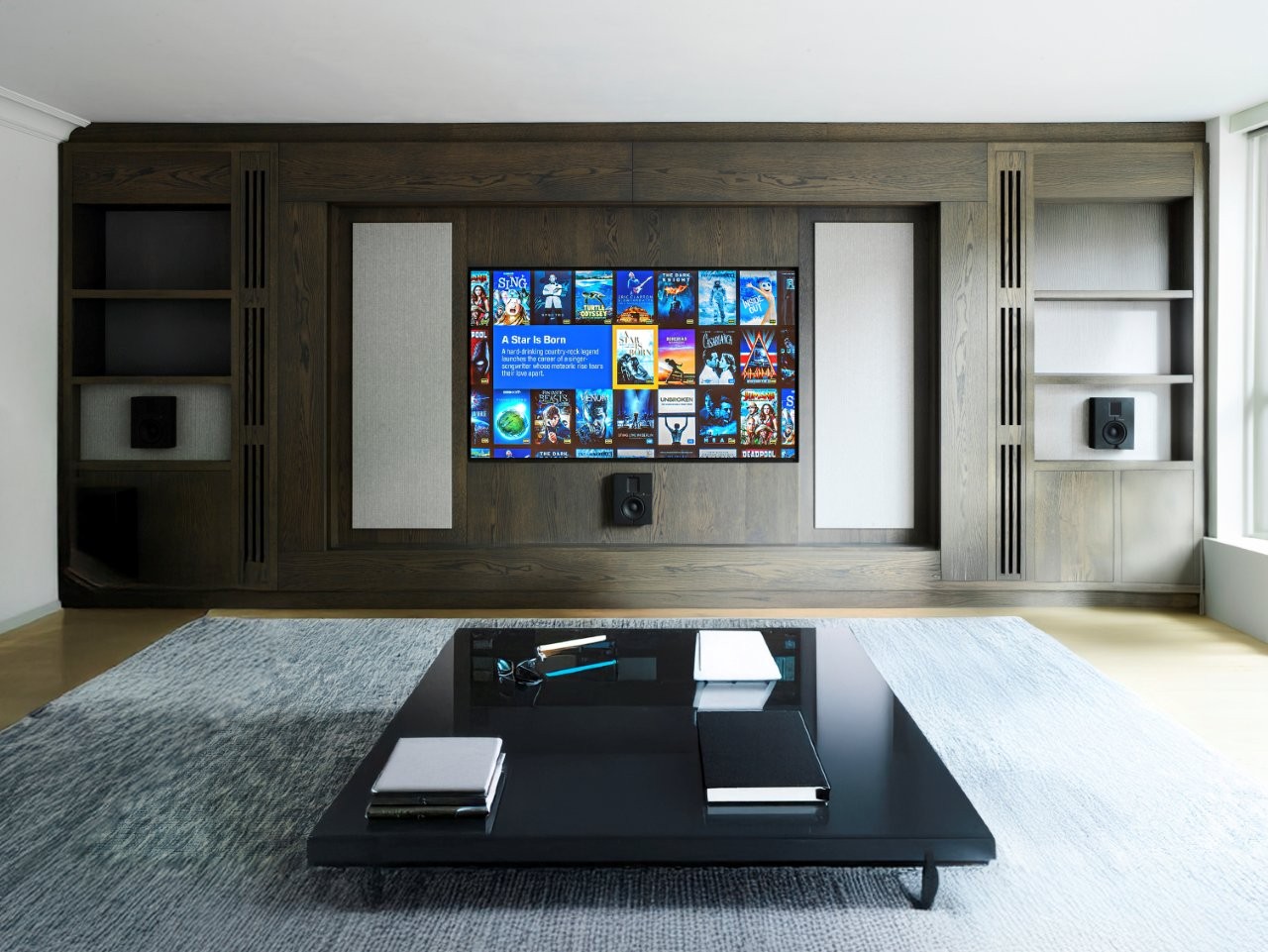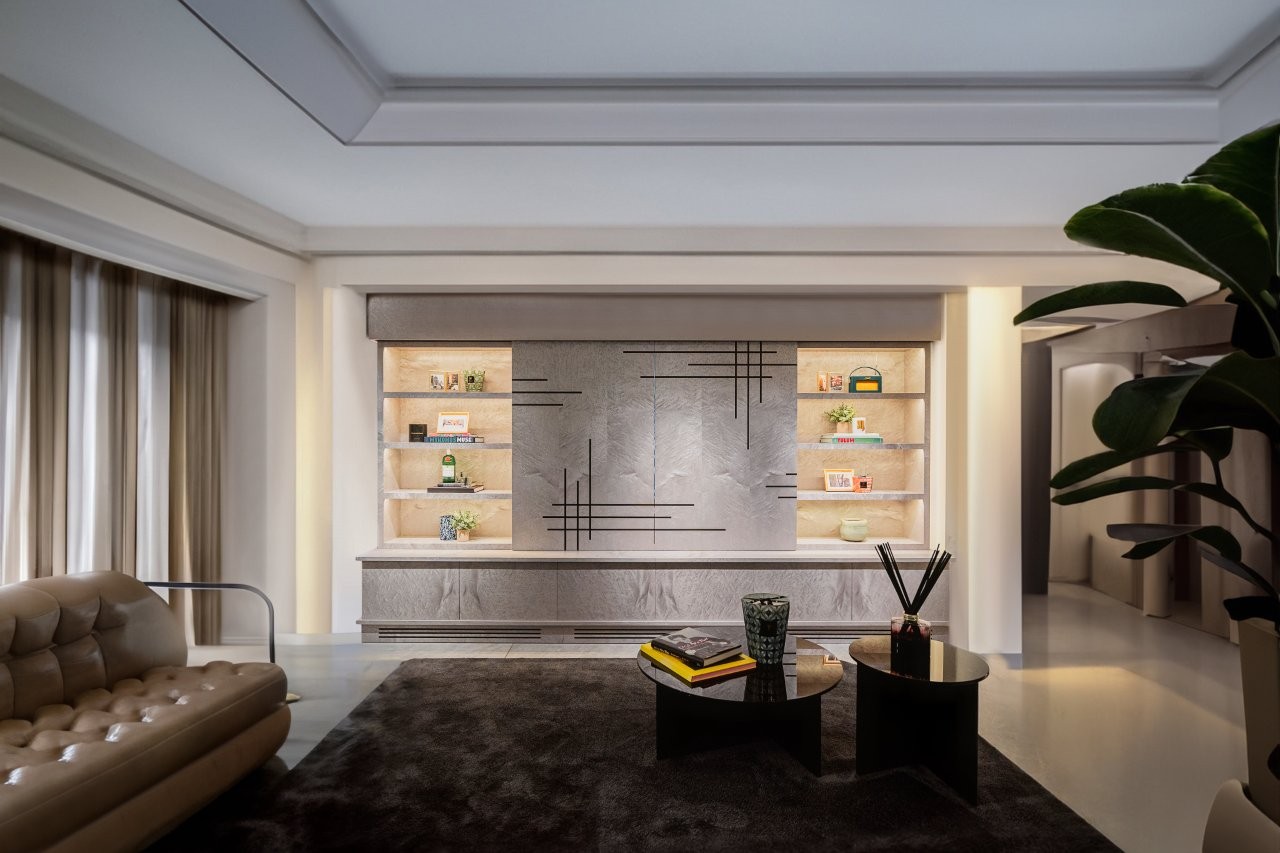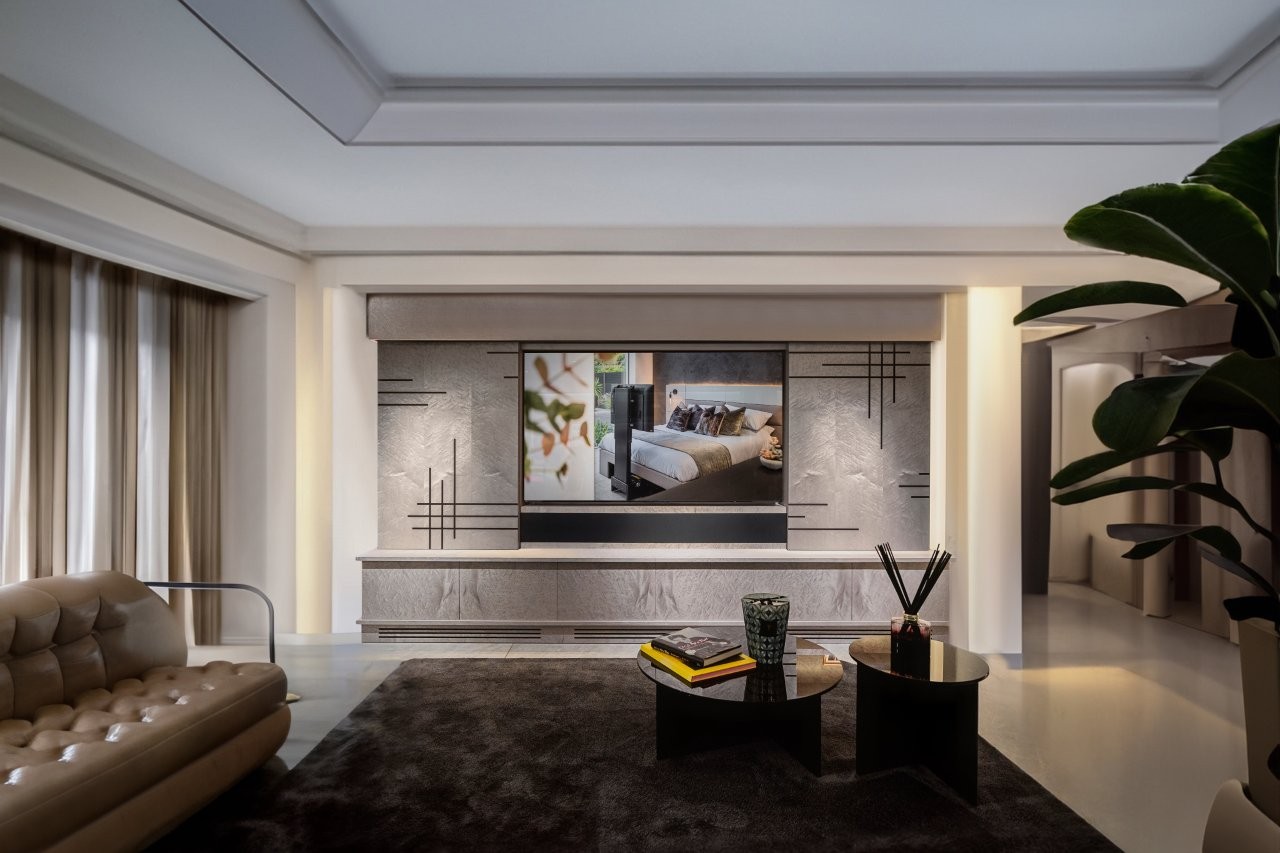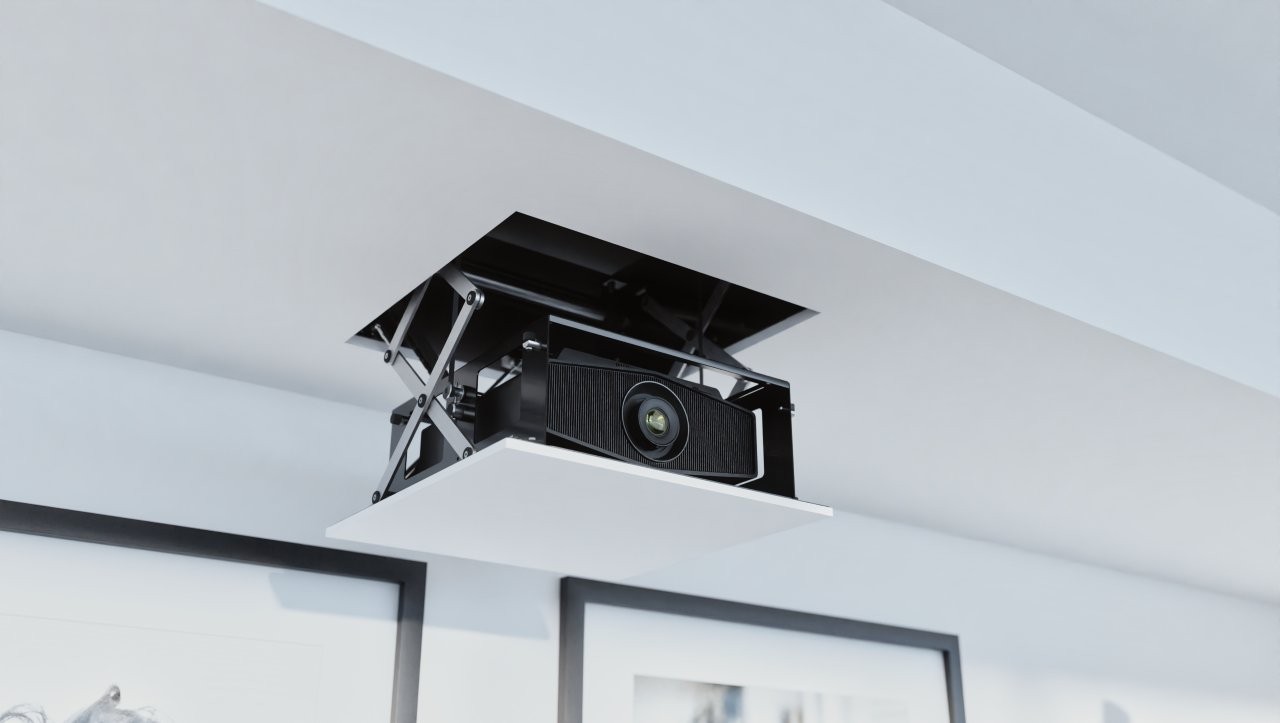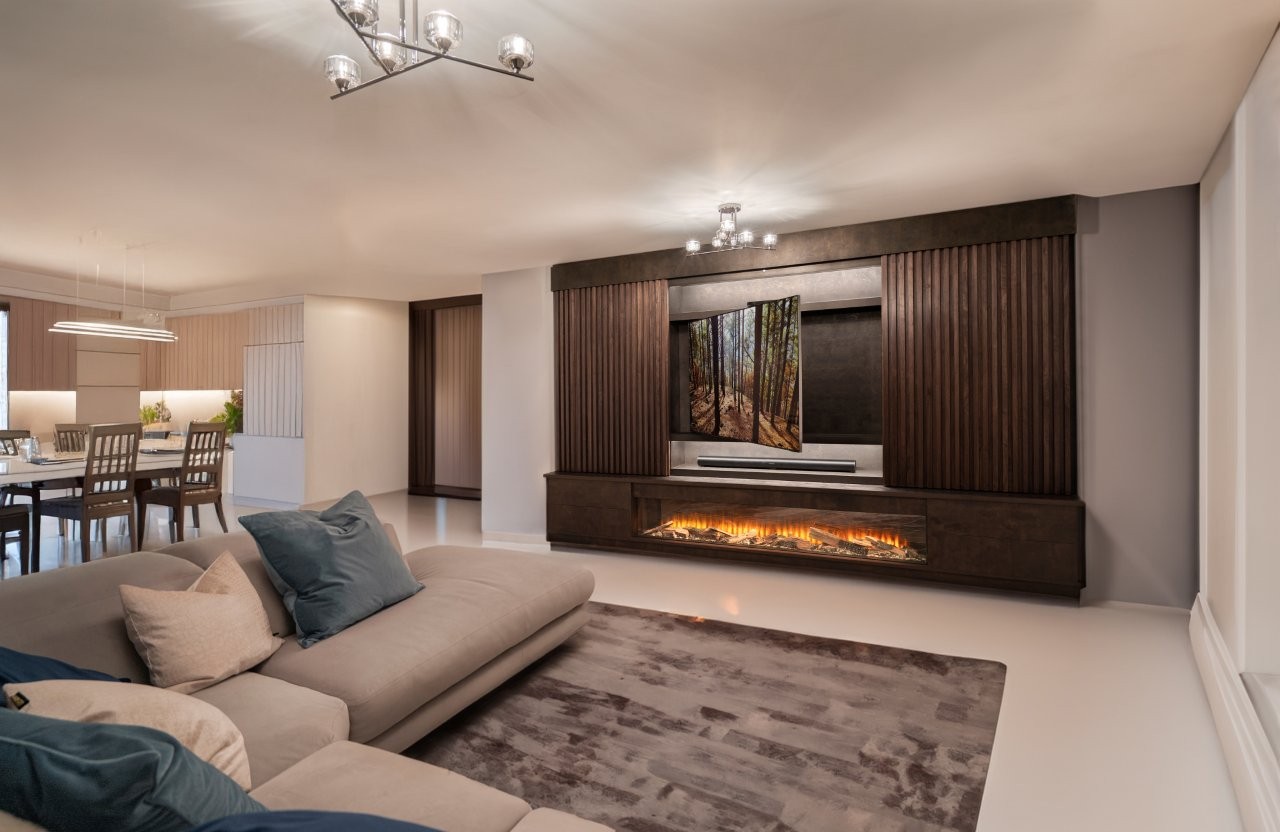Media walls have reflected the technology of the time for decades. So, as we look to the future, how will advancements in smart home design reshape these central features of our living spaces? Ollie French, Commercial Director at Future Automation takes a look…
We’ve experienced a revival in demand for personalised media walls which integrate seamlessly into modern spaces. Media walls have always offered a unique level of customisation and give clients an opportunity to have a piece of furniture which is more personal and reflects their individual lifestyle.
The evolution of a personalised piece of cabinetry that housed technology stemmed from the media walls of the ‘80s and ‘90s. These bulky ‘entertainment centres’ were fully customised to house the clients’ prized VHS, Video Game, and DVD collections. This singular piece of bespoke furniture acted as a hub for families to enjoy movies or video games from a single area in the home.
This reflected the lifestyles of clients at the time when physical media collections were still a requirement if you wanted to watch a movie or play a video game at home. They did a great job of bringing all of the technology into a single piece of furniture that often had the added benefit of being able to conceal technology behind cabinet doors when it wasn’t in use.
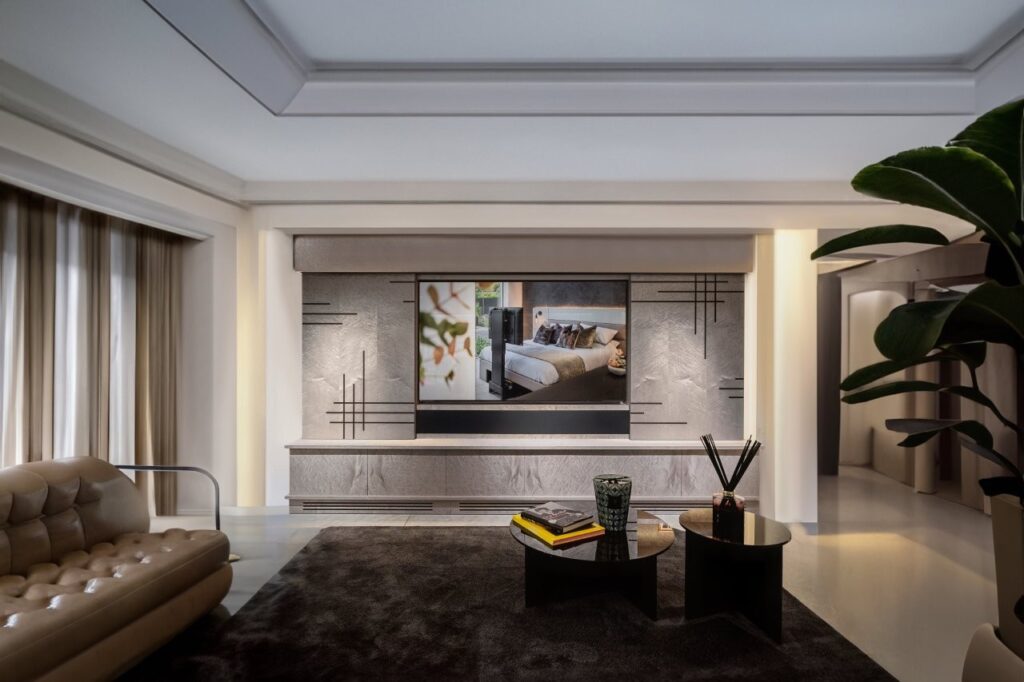
Despite their often beautiful craftsmanship and robust construction, these entertainment centres are fundamentally incompatible with contemporary displays. As display technology has evolved dramatically, these style of media walls have since become impractical relics of a bygone era.
However, even though this historical style of media wall became obsolete, the desire from clients for beautifully crafted furniture that integrates modern technology into their space remains.
Future Automations’ acquisition of luxury furniture and décor manufacturer MHB Interiors demonstrates the ongoing desire from clients for innovative furniture solutions that seamlessly integrate smart home technology into their spaces. Bringing the design and manufacturing of furniture in-house enables purpose-built pieces that are designed from the ground up to meet the requirements of modern smart homes.
Fully integrated smart home media walls now offer the ability to disguise audiovisual technology while serving a more design-led purpose. Instead of cluttered shelves displaying rows of DVDs and CDs, this newfound space can now be used to artfully showcase treasured artefacts and personal possessions.
Smart ambient accent lighting can be integrated into these shelves, highlighting collectibles and decorative items that tie the entire room together aesthetically. This shift reflects how our relationship with entertainment has evolved—physical media collections have given way to digital libraries, freeing our living spaces to express personality rather than storage.
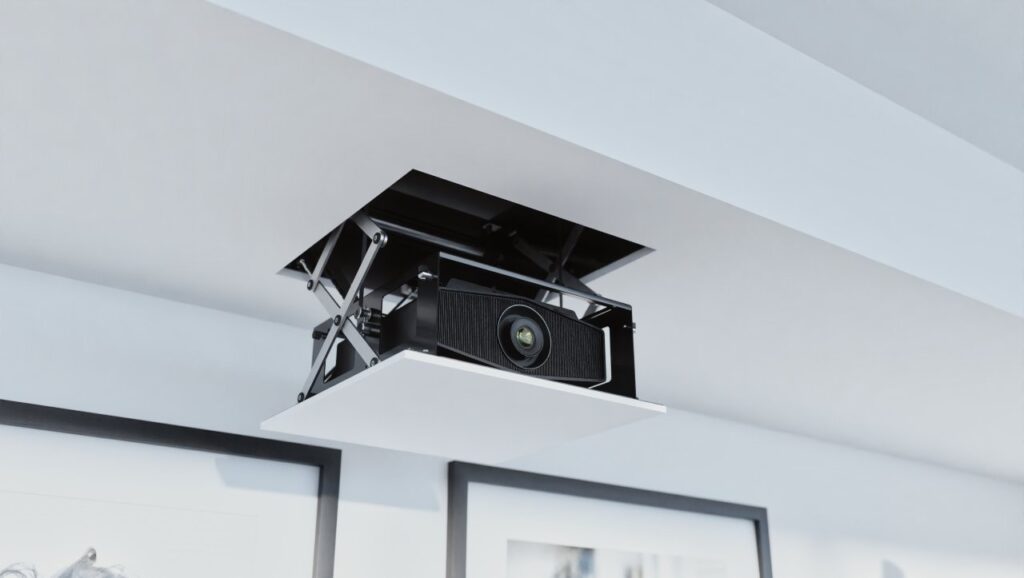
Also, modern technology advancements mean clients no longer need to hide their TV behind traditional cupboard doors as was common with older media cabinets. For those who value cinematic experiences on larger screens, today’s media walls can be customised with discreetly integrated motorised panels.
This elegant solution preserves the wall as a design feature while allowing displays to vanish from view when not in use. The approach represents a fundamental shift in our relationship with technology in living spaces—rather than permanently hiding devices away, we’ve created environments where technology can seamlessly appear or disappear as needed, enhancing both form and function.
Media walls can also be installed with hidden features to completely transform a room when needed. For instance, integrating a motorised sliding projector screen inside the media wall and pairing that with a motorised in-ceiling projector reveal system allowed this client to turn their living room into a home theatre at a moment’s notice.
The benefits are that this technology remains completely hidden from view when not in use. With a single command, either through voice control or an app, the entire character of the space can change to suit the moment.
These advancements have given interior designers and architects the ability to create more versatile spaces which can serve multiple functions in a single area without compromising on the look and feel.
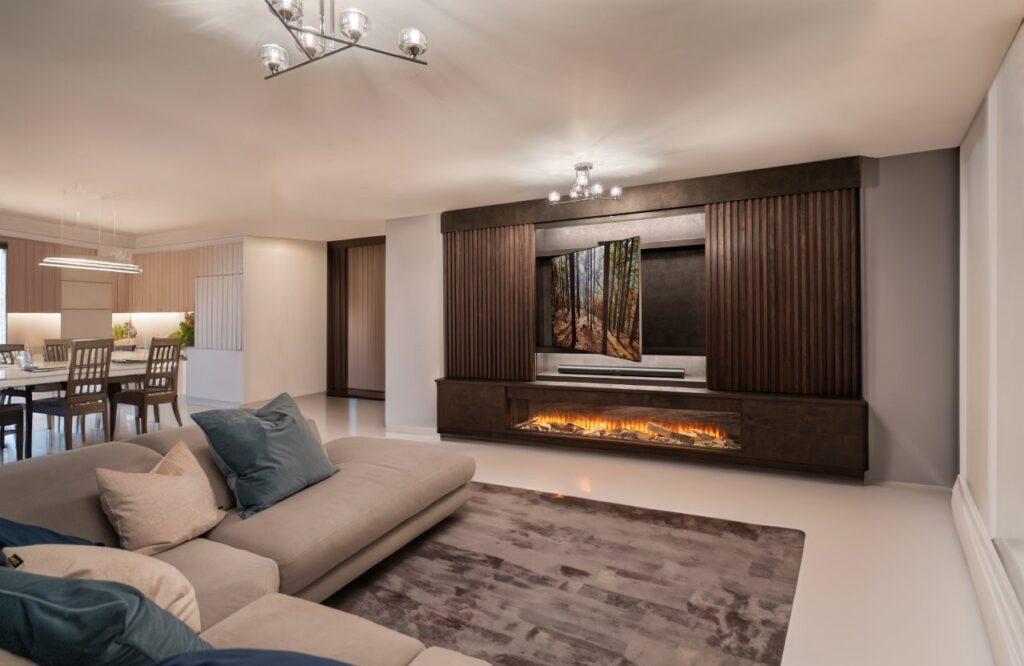
A living room can transform into a home theatre while maintaining its design integrity—something that wasn’t possible with the rigid entertainment centres of the past, which dictated the arrangement and use of the entire room. Modern media walls adapt to the homeowner’s lifestyle rather than forcing adaptation around fixed furniture, which was previously unattainable.
There’s now a virtually limitless selection of configurations and finishes for clients to choose from. This means interior designers and architects can design and integrate a media wall for their client which suits their personal style while incorporating the latest technology.
So now a media wall is still a piece of beautifully crafted furniture, but it can now serve even more functions in a sleeker and integrated format that blends seamlessly into a space. It can integrate additional smart features like ambient lighting, AV, climate control, fireplaces and have the ability to conceal all technology from view when it isn’t in use on command in a way that’s integrated with the rest of the smart home for complete control.
These advanced media walls represent how far we’ve come from the days of bulky entertainment centres.
While they still serve the same fundamental purpose—housing our entertainment systems—they do so with an elegance and versatility that was not possible with the earlier technology of the time. The media wall has completed its transformation from practical necessity to design feature giving it a revival in the age of the fully integrated smart home.


